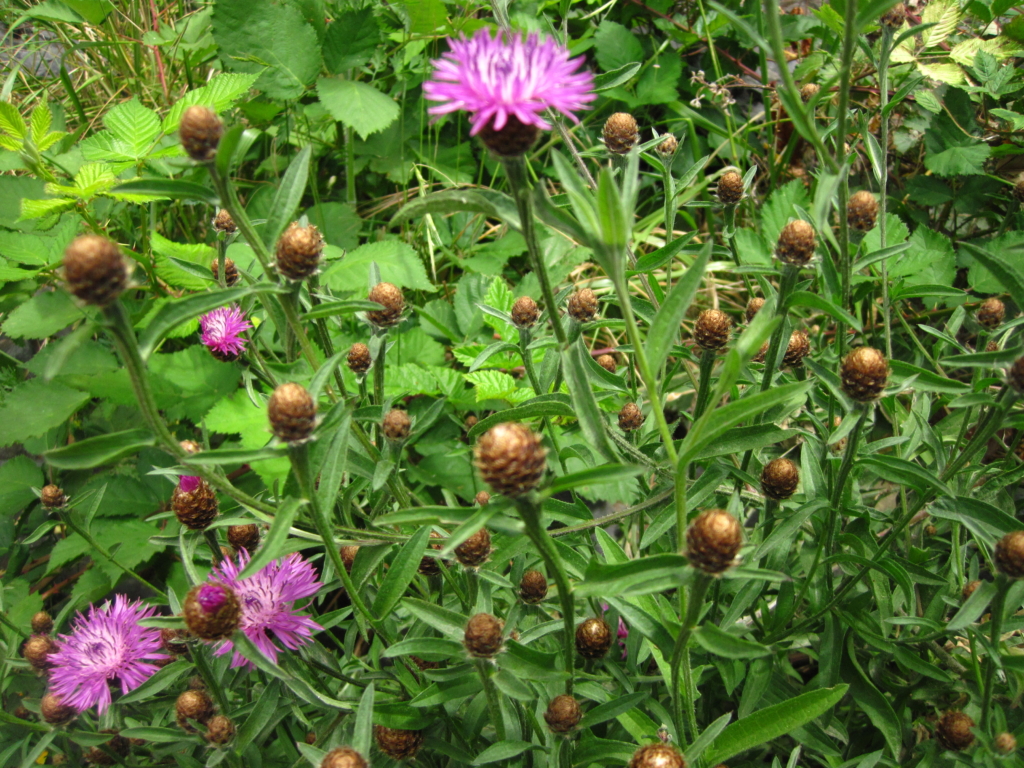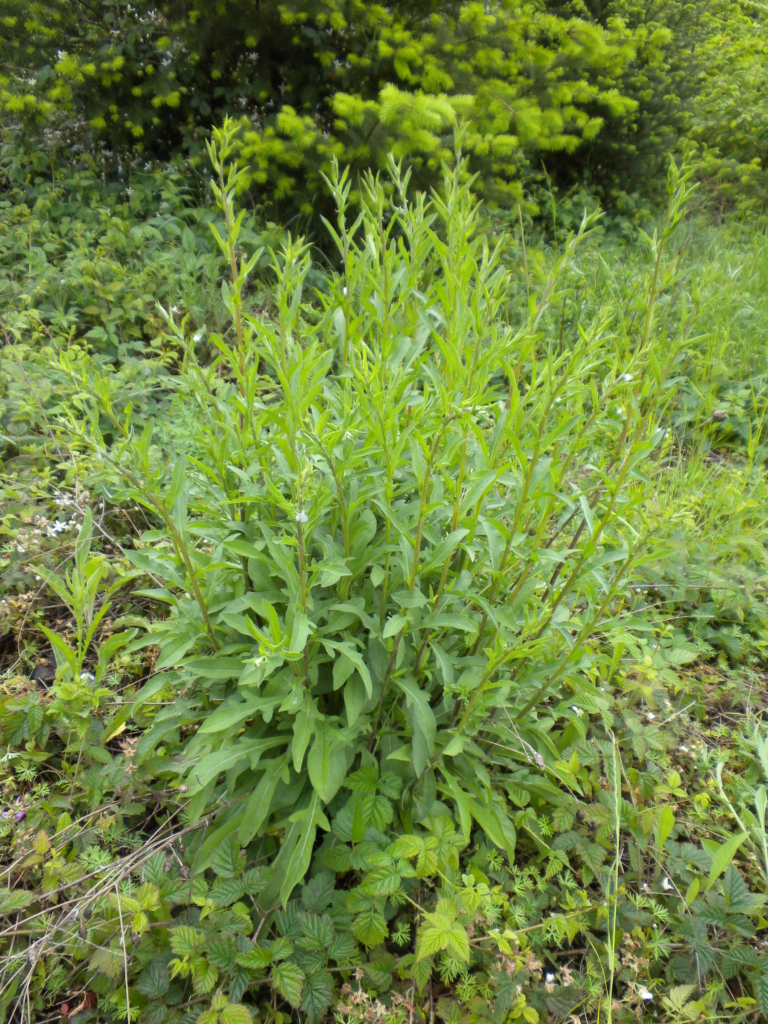Meadow Knapweed
Centaurea pratensis (aka Centaurea jacea x nigra, Centaurea debeauxii ssp. thuillieri)
Plant Description
An herbaceous perennial in the sunflower family. One to several stems extending from a woody root; bright pink to purple flowers with papery, fringed bracts on the flower heads. Slightly hairy lobed or unlobed leaves in basal rosette with smaller leaves up to 6 inches long along the stems.
Plant Details
| Life Forms | |
|---|---|
| Habitats | |
| ODA Listing | |
| Soil and Moisture Conditions | |
| Suggested Actions | |
| Shade Preference | |
| Mature Height | 1-5' |
| Distribution | Widespread in Western Oregon and found in northeast, southwest, and central Oregon. Also found in California, Colorado, Idaho, Montana, and Washington |
| Control | Till and cultivate to bury seeds and plant material below 1.5 inches deep and replant with cover crop. Dig or pull plants before seedheads form and repeat every year until plants are no longer found. |
| Disposal Methods | Bag and seal flower heads and dispose of in landfill. |
| Reproduction and Spread | Reproduces from seed and root crowns resprout. Seeds can be carried to new sites by mowing equipment, vehicles, and in moving water. |
| Introduced | Introduced from Europe for livestock forage |
| Look Alikes | other knapweeds, especially spotted knapweed. |
| Impact | Spreads along roadsides, pastures and disturbed sites excluding native plants; difficult to control; threatens wildlife habitat and economically impacts Christmas tree growers. Not palatable to livestock and reduces available grazing forage. |
| More Info |
|
© Marion Soil and Water Conservation District. All Rights Reserved.


